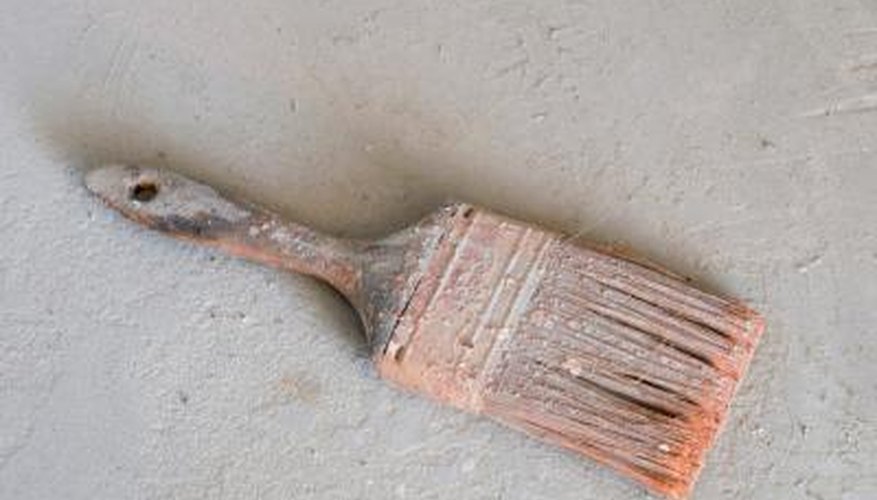Lincrusta is an embossed wall covering made of wood flour and gelled linseed oil. Although Lincrusta is well-suited for paint, do-it-yourselfers often have difficulty generating a flawless finish because the deep embossing tends to promote excessive runs. If you're planning to paint Lincrusta, learn the proper way to generate attractive results, free from messy runs. Take the time to prepare the Lincrusta properly, or the new finish may separate and peel away.
- Lincrusta is an embossed wall covering made of wood flour and gelled linseed oil.
- Take the time to prepare the Lincrusta properly, or the new finish may separate and peel away.
Wipe the Lincrusta with white spirit solvent, using rags. Allow an hour for the solvent to evaporate.
Cover areas next to the Lincrusta, using tape. Professional painter's tape will provide good protection and won't damage underlying varnish or paint; recognise painter's tape by its light blue colour. Cover flooring below the Lincrusta, using canvas dust sheets.
Coat the Lincrusta with acrylic primer, using a roller. Roll vertically, priming a 3-foot-wide portion of the Lincrusta.
- Coat the Lincrusta with acrylic primer, using a roller.
Run a polyester brush over the wet primer to prevent runs and promote smooth results. Brush vertically, pressing lightly with the brush. Continue until all of the Lincrusta is primed. Let the primer dry for two hours.
Place your tools in the bathtub and wash them with running water.
Paint the Lincrusta the same way you primed it. Satin or semigloss latex paint is appropriate for Lincrusta.
WARNING
Even if the Lincrusta appears completely clean, unseen dust and oils may exist on the surface. These impurities will prevent the acrylic primer from adequately bonding with the Lincrusta. Be sure to degrease the surface using white spirit solvent, or peeling may result.
